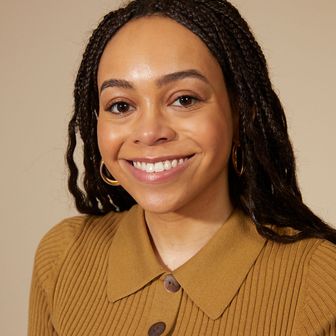Michael Ballhaus, the famed cinematographer who died Wednesday at 81, was responsible for Goodfellas’ most famous shot. Early in the film, Henry Hill takes his future wife Karen on their first proper date. As he hands off his keys to the valet and leads her down the kitchen entrance of the Copacabanana, the camera trails behind them. Ray Liotta and Lorraine Bracco stay in the center of the frame as they move between chefs and busboys, until the camera glides a little ahead of them. From somewhere offscreen, a table and tablecloth seem to float in for the couple to sit at, right in front of comedian Henny Youngman (“Take my wife!”). It’s the height of romance: the whiteness of the tablecloth, the way the table seems to levitate in. The moment teases a tacky little slice of heaven for both Karen and the audience.
You don’t have to know anything about steadicams to feel the specialness of that scene. It’s the crowning moment of Ballhaus’s long collaboration with Martin Scorsese. The cinematographer’s career was launched from his work with the German director Rainer Werner Fassbinder, but his style was an ideal match for Scorsese’s dizzying camera movement. The Goodfellas shot feels dazzling and effortless all at once.
Ballhaus created other great scenes with Scorsese, ones that play much simpler but were complicated to perfect. The Copacabana long take gets all the attention, but, for me, their first collaboration, After Hours, is even better. The film moves fiercely and freely around a wild portrait of downtown New York City in the mid-’80s, zooming in on and whizzing between absurdities. It’s a long nightmare that’s hilarious and frenetic and anxious all at once. Our hero Paul Hackett (Griffin Dunne) is chasing a girl around Soho, trying to pin her down and seduce her. Once that goes south, he’s just desperate to make it back home uptown.
Ballhaus’s camerawork gets at the underlying insanity of the movie’s comedy. “At what I assume was Mr. Scorsese’s direction, Mr. Ballhaus’s camera takes on an aggressive, willful personality of its own,” Vincent Canby wrote in his New York Times review. “Racing across images, like a dog straining at a leash, to scrutinize small details, or watching with rapt attention as a $20 bill floats to earth, the camera plays the role of a narrator whose manner is amused, skeptical and not at all inclined to allow itself to become sentimentally involved.” In one scene, the roommate of the woman Hackett is after drops down the keys to the apartment so he can get in. This shot, more than anything in Goodfellas, seems purely Ballhaus’s device. It was a quick shoot, according to Roger Ebert’s review, and had to come up with the rapid crane movement on the spot to make it happen. The camera watches the keys fall, then takes the keys’ point of view to look down at Hackett, and finally we’re seeing them from Hackett’s perspective, looking up at them. When they hit the concrete, the camera zooms in for a close-up. It’s manic.
Ballhaus worked with other directors — and Scorsese, other cinematographers — but their collaborations were always exciting. The Departed and Gangs of New York used Goodfellas’ same visual grammar, but without the earlier movie’s romance. The Age of Innocence finds a different kind of richness in the candle-lit living rooms of 1870s New York. The Last Temptation of Christ was some of the most rigorous work of both men’s careers. (“It’s going to be a tough movie. Every shot is going to be working against us,” he told Scorsese on set) And The Color of Money — it’s a hokey script, but I’ve always found it an exciting movie to watch because of Ballhaus’s work. He found the bright greens and reds and blacks in every smoky pool hall, and the pool cue POV, combined with Thelma Schoonmaker’s editing, is great to look at.
“Marty is my favorite director because he’s the most visual filmmaker I’ve worked with in America,” Ballhaus told the American Society of Cinematographers just after Departed’s release. Ballhaus created the 360-degree tracking shot with Fassbinder, but his collaboration with Scorsese was just as meaningful. It was Age of Innocence that Ballhaus named as his favorite of his career: “His ideas on how to shoot a scene are worked out very precisely. And for me it was an absolute joy to realize those ideas.”


